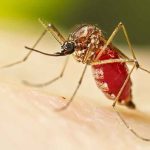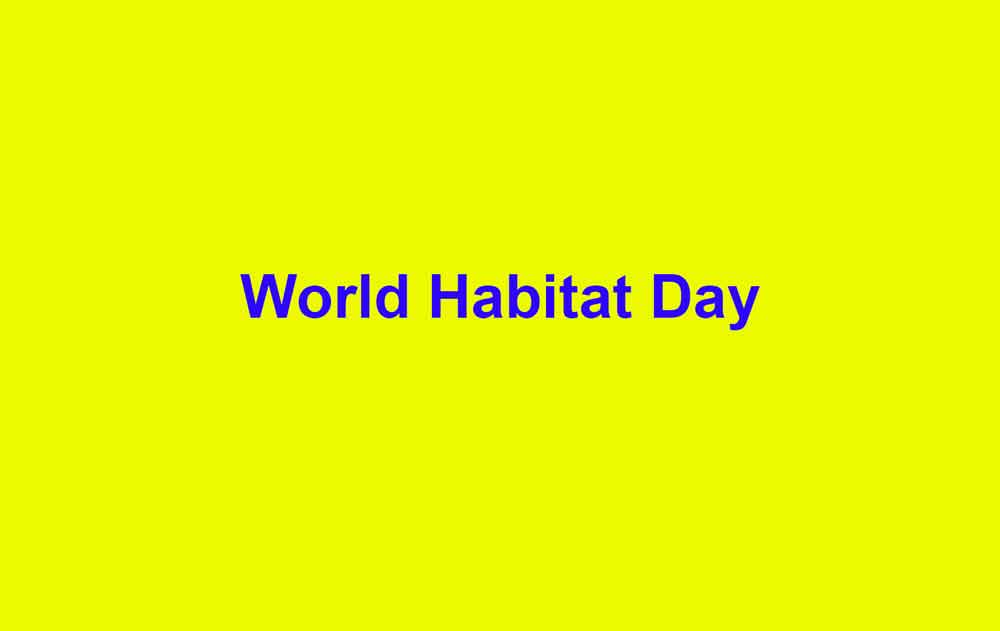Dr. N. Munal Meitei,
Environmentalist, email-nmunall@yahoo.in

The first Monday, 7th October is observed as the World Habitat Day. The objective the day is to raise awareness about urbanization trends, challenges and sustainable solutions for life in cities and towns in exchange of forests and natural habitats. World Habitat Day this year will be observed in the City of Querétaro, Mexico on the theme “Engaging youth to create a better urban future”. Empowering youth and their involvement in urban decision-making is indispensable for developing resilient cities.
The basic right of all humanity to settle with affordable housing and pristine existence of wildlife is the objective and thus it is the celebration for home. There is a global housing crisis, approximately 1.6 billion people worldwide are living in the substandard housing and almost 150 million people are homeless.
But today my discussion will be on wildlife habitats. In ecology, a habitat is described as a type of natural environment in which a particular species of organism lives. It is characterized by both physical and biological features. A species’ habitat refers to those places where it can find food, shelter, protection and mates for reproduction.
Deforestation and climate change have destructed nearly a quarter of all natural habitats around the world. The rapid loss of habitat would mean rapid extinction of already vulnerable species. The study published in the Nature found that more species are expected to die sooner than predicted.
Shrinking ranges for mammals, amphibians and birds already account for an 18% loss of previous natural ranges, the study found. Climate change and global food demand could drive a startling loss of up to 23% of all natural habitat ranges by this century’s end.
Global food demand currently fuels agricultural sectors to increase land use, moving into habitats previously untouched. What results — deforestation — leaves more CO2 in the air, increasing greenhouse gas emissions, the main driver of climate change. In India, agriculture-related emissions measure 14% of the greenhouse gas emissions.
Rather than focusing on the economic or material benefits from nature, the world began to appreciate the value of nature now and the need to protect the most fragile and beautiful environments for posterity. Today, the governments worldwide with a strong movement is mobilizing to protect habitats and preserving biodiversity on a global scale. The natural environment is a source for a wide range of resources that can be exploited for economic profit, for example timber is harvested from forests and clean water is obtained from natural streams. However, land development from anthropogenic economic growth often causes a decline in the ecological integrity of nearby natural habitat.
There is the highest economic value in conserving the natural habitats. Financial profit can be made from tourist revenue but the cost of repairing the damaged ecosystem is considered to be much higher than the cost of conserving natural ecosystems.
Habitat conservation is important in maintaining biodiversity, an essential part of our global food security. Wild species of agricultural plants have been found to be more resistant to diseases than the home grown species. Thus a combination of seed banking and habitat conservation has been proposed to maintain plant diversity for food security purposes.
Deforestation, pollution, climate change and human settlements have all been driving forces in altering or destroying habitats. The biodiversity hotspots are the home to millions of species. Once their habitat is destroyed, they cease to exist. This destruction has a follow-on effect; the species which coexist or depend upon the existence of other species also become extinct, eventually resulting in the collapse of an entire ecosystem. As a result the extinction rate has climbed to the point where the Earth is now within a sixth mass extinction event, as agreed.
Changes in land use caused by logging, mining, railways, highways, dams, electric towers, bridges, oil and gas exploration, agro-industry, cash crop farming, subsistence agriculture and other development activities are competing with natural habitat for the wildlife. There are national and international laws to protect the species, but there is no Law to protect the habitats on which they depend and thus the sizes of important habitats are diminishing day by day leading to the extinction of many animal species from the surface of the Earth.
In Manipur, out of our geographical area 22,327 sq.km, 77.20 % in recorded as forests area. Around 8.42 % of the total forest area is under reserved forests including wildlife protected area network, 23.95 % is protected forests and the rest belong to the category of un-classed forests. But only 22.11% represent the dense forest and the rest are not in the meaning of a good forest. The most important reasons for dwindling the forest of Manipur are Jhum cultivation, logging of timbers, felling trees for fire-wood, uncontrolled forest-fire, coming up of new villages and other development activities. Poppy plantation is the biggest social and environment challenge at this moment. More than 96 thousand families in the state are reported to practice Jhum cultivation with an average area of about 4 ha by each family. Thus a huge area of our forests is cleared every year challenging both to our environment and the habitats for the animals.
Therefore, with the celebration of World Habitat Day, 2024, let’s save the habitats both for the human community and for our wildlife so that we can hand over a green and beautiful habitat to our future













